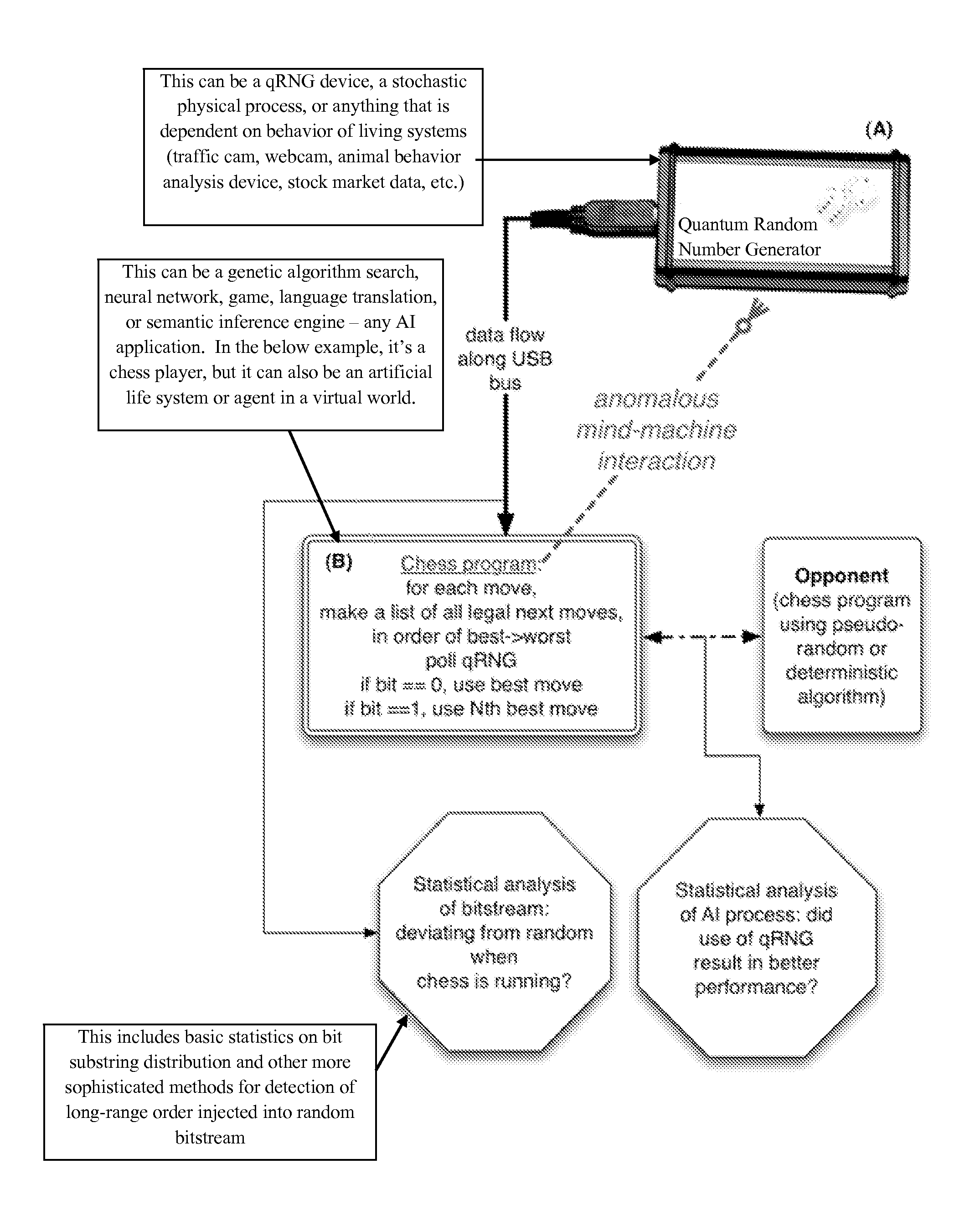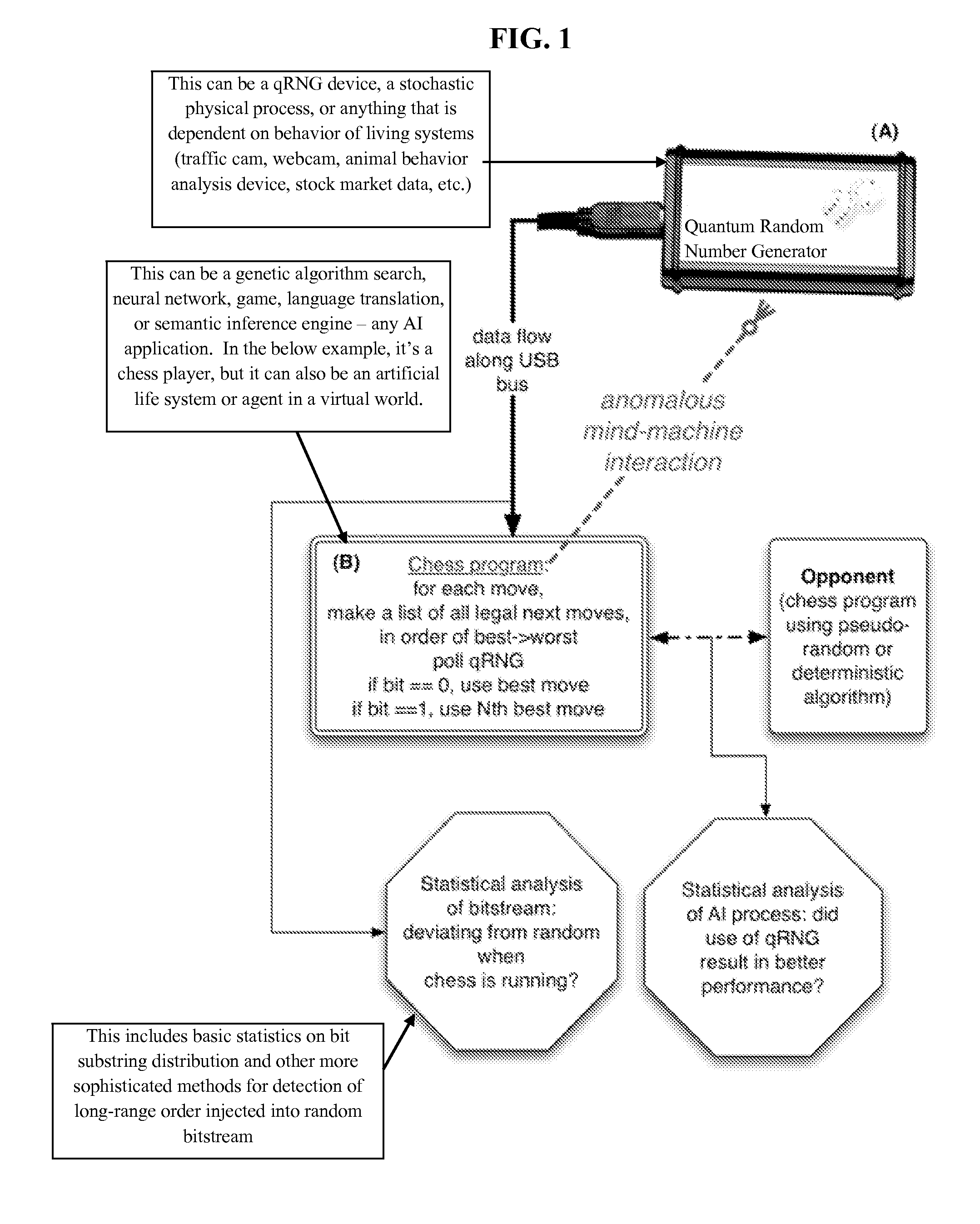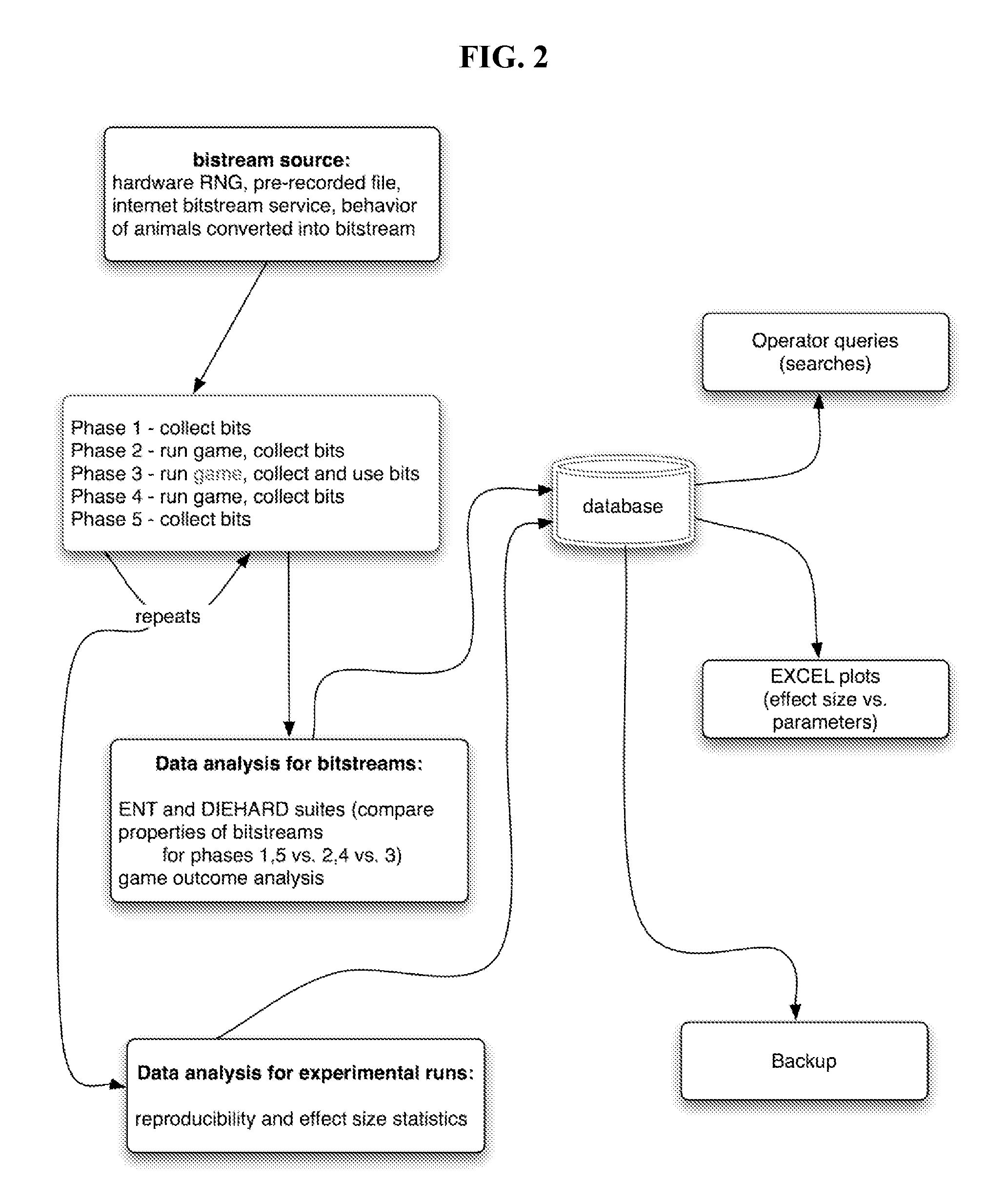Coupling of rational agents to quantum processes
a quantum process and rational agent technology, applied in the field of coupling rational agents to quantum processes, can solve the problems of inability to produce useful applications of this effect, and scientists have been unable to determine precisely what aspects of information processing, so as to increase the likelihood of artificial intelligence agents, and increase the likelihood of outcomes.
- Summary
- Abstract
- Description
- Claims
- Application Information
AI Technical Summary
Benefits of technology
Problems solved by technology
Method used
Image
Examples
example 1
Chess Program
[0092]The system entails an AIA performing one or more cognitive tasks; a chess program was used in experiments conducted during development of embodiments of the present invention. The success of the chess program is made to depend upon the output of a quantum mechanics-based random bit generator or qRNG. Each turn, the chess program has a list of legal moves that can be made from the current position. The program sorts the legal moves based on how advantageous its position would then be. In the system used during development of embodiments of the present invention, the program then pulls a bit off a commercial USB-based qRNG. The qRNG is calibrated to provide a constant stream of in-principle-unpredictable bits with entropy=8 bits / byte. If the bit arrives as a “1”, the chess player gets to make its best available move (as determined by its ranking of the available move. If the bit arrives as a “0”, the chess player is forced to make an inferior move. The player in the...
example 2
Virtual Ecology
[0096]Experiments were conducted during development of embodiments of the present invention using a virtual ecology system in which virtual subjects compete for resources (e.g. grass) (SEE FIG. 4). The speed of movement of the subjects and the distance from which the creatures can observe the resources was controlled by the value of bits being pulled from a random number generator. Virtual subjects either pulled bits from a qRNG or a pseudo-RNG. The qRNG subjects exhibited significantly enhanced performance over those drawing bits from pseudo-RNGs (SEE FIGS. 5-7). In 71% of the experiments run (SEE FIGS. 5-7), one of the subjects died before the end of the experiment due to lack of resources. Of those experiments, the subjects whose speed and observation distance was determined by the pseudo-RNG died out early in 91.1% of the experiments. These data demonstrate a performance advantage obtained through the use of a qRNG to supply bits to an AIA, especially with respect...
example 3
Neural Network
[0097]Experiments were conducted during development of embodiments of the present invention using a neural network to sort trained signals. The bits derived from a qRNG (calibrated to provide equal number of good and bad outcomes) determine when the network gets damaged, adversely affecting its performance as its finely-tuned memory gets scrambled. The data stream was monitored over time as bits were collected, but not used by the network (SEE FIG. 8, left panel), and while the bits drawn from the qRNG were used to direct damage of the network (SEE FIG. 8, right panel). The cumulative average is plotted as a function of time resulting in a “bitwalk” plot. During the control (bits not used) phases, the average meanders within an envelope indicating the p=0.01 level of statistical significance (departure from chance behavior). However, when the bits are used to decide whether to damage the network, the bitstream is seen to clearly deviate well outside the p=0.01 “random ...
PUM
 Login to View More
Login to View More Abstract
Description
Claims
Application Information
 Login to View More
Login to View More - R&D
- Intellectual Property
- Life Sciences
- Materials
- Tech Scout
- Unparalleled Data Quality
- Higher Quality Content
- 60% Fewer Hallucinations
Browse by: Latest US Patents, China's latest patents, Technical Efficacy Thesaurus, Application Domain, Technology Topic, Popular Technical Reports.
© 2025 PatSnap. All rights reserved.Legal|Privacy policy|Modern Slavery Act Transparency Statement|Sitemap|About US| Contact US: help@patsnap.com



